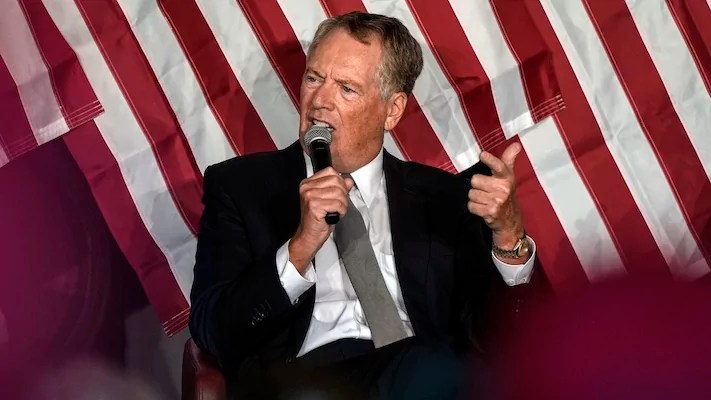President-elect Donald Trump has reportedly asked former U.S. Trade Representative Robert Lighthizer, a high-profile protectionist and critic of past trade deals, to reprise his role and once again lead trade policy in the incoming administration.
If he takes the role as U.S. trade representative, Lighthizer would oversee the biggest transformation of U.S. trade policy in modern history should the Trump administration follow through on its campaign promises to impose universal tariffs. Lighthizer was gunning for other roles in the administration, but Trump asked him to lead trade, according to a report from the Financial Times.
The Washington Examiner reached out to Lighthizer and the Trump transition team to comment on the report. Lighthizer did not respond.
“President-Elect Trump will begin making decisions on who will serve in his second Administration soon,” Trump transition spokeswoman Karoline Leavitt told the Washington Examiner in a statement. “Those decisions will be announced when they are made.”
BIDEN’S BEST EFFORTS COULD NOT KEEP UNIONS FROM DECLINING OR DEFECTING TO THE GOP
Lighthizer, 77, has extensive experience in trade policy and on China, serving as deputy U.S. trade representative in the Reagan administration before spending decades working in international trade law and then becoming Trump’s trade representative.
During Trump’s first term, and with guidance from Lighthizer, he hiked tariffs on China, as well as on commodities such as steel and aluminum and goods such as washing machines, using existing powers, especially national security authorizations.
In 2018, Trump used Section 232 of the Trade Expansion Act of 1962, which gives the president broad power to levy tariffs if there is a threat to national security, to impose a 25% tariff on imported steel and a 10% tariff on aluminum. In the following years of the Trump administration, exemptions were granted to several countries, including Australia, Canada, and Mexico.
But this time around, Trump appears poised to go even further in pushing U.S. protectionism.
Trump’s most aggressive idea is to levy 10% to 20% across-the-board tariffs. He has also pushed for a law to give him the power to unilaterally impose tariffs of equal size placed by other countries on the United States, something that would require lawmakers to approve.
But many experts think Trump can remake a lot of trade policy right out of the gate.
“There’s a bucket of laws out there that Congress has passed that delegate their constitutional authority to the president — and do so on really broad and ambiguous terms,” Scott Lincicome, vice president at the Cato Institute and an expert in trade policy, recently told the Washington Examiner.
CLICK HERE TO READ MORE FROM THE WASHINGTON EXAMINER
Trump was able to capture more of the working class vote this election cycle. He campaigned heavily on imposing major tariffs with the hope of rebuilding domestic manufacturing and becoming less reliant on trade with other countries. In fact, many union voters supported him over Vice President Kamala Harris this time around.
Ahead of the election, the Teamsters released internal polling of its membership indicating that 58% support Trump, compared to 31% who back Harris. Trump’s economic appeal among blue-collar workers has increasingly put union members on the opposite side of the political fence from union leaders.

